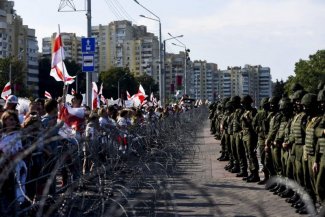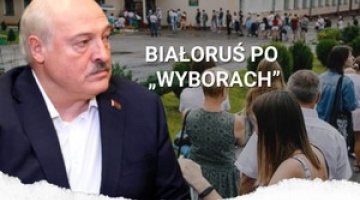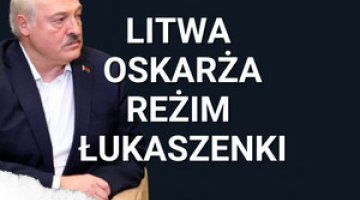Stalemate. The political crisis in Belarus

On 30 August, a Peace and Independence March attended by at least 100,000 people was held in Minsk. This was the third consecutive Sunday of mass demonstrations held by Belarusian citizens demanding the resignation of Alyaksandr Lukashenka and new, fair presidential elections. The march ended in front of the presidential palace, which was protected by substantial numbers of security forces. At the end of the demonstration, the participants were approached by Mikalai Latyshonak, an advisor to Lukashenka, who called for the peaceful resolution of the conflict and reported that work on a new constitution was underway. Much smaller demonstrations, ranging in size from several hundred to around ten thousand participants, were held in Hrodna, Brest, Mahiliou, Homel and many smaller regional cities, including Baranavichy, Orsha, Pinsk, Maladzechna, Lida and Zhodzyna. All the demonstrations went off peacefully; on this occasion, they also included mocking ‘celebrations’ of Lukashenka’s 66th birthday. On 29 August, a women’s solidarity march attended by around 10,000 participants was held in Minsk. The demonstrators’ activity has been much less intensive on working days; only a few thousand people have been assembling in the centre of Minsk on those occasions.
In recent days, the law enforcement forces have adopted the tactic of gradual doses of repression, detaining the most active demonstrators (excluding women) and journalists. On 30 August, about 140 people were detained in Minsk, some of whom will probably be detained for several days. The OMON tried to break up the column of demonstrators into several smaller groups and prevent them from moving around the city centre. Violence was not used against the detainees, and the use of rubber bullets, water cannons, flashbangs and tear gas which was prevalent immediately after the election has been abandoned. At the same time, however, the authorities attempted to intimidate the demonstrators by deploying considerable numbers of OMON forces in Minsk, as well as regular army troops equipped with infantry fighting vehicles. The protesters were repeatedly warned about the illegal nature of all assemblies. In addition, the president’s press service published another photo of him carrying a Kalashnikov.
In recent days, Lukashenka has continued his aggressive anti-Western rhetoric. On 28 August, he highlighted the concentration of military forces in Poland and Lithuania, in particular the “redeployment from Berlin” to Poland of American military aircraft which, in his opinion, could also “carry nuclear missiles”. He also threatened to introduce sanctions against Vilnius and Warsaw which would consist in blocking the transit of goods through Belarus and redirecting Belarusian exports from Klaipėda to other Baltic ports (although he did not specify what these alternative routes might be).
At the same time, intensive consultations between Lukashenka’s government and the Kremlin are underway. On 30 August, the leaders of Russia and Belarus held their fifth telephone conversation since the political crisis began. Vladimir Putin gave Lukashenko birthday greetings and invited him to pay a visit to Moscow “during the next few weeks”.
In recent days, most Belarusian banks have suspended lending to physical persons and limited the loans they are making to businesses. The main reason for this is the problem with the banking sector’s liquidity in Belarusian roubles; this in turn has been caused by the massive withdrawal of savings by the general public, who have been buying up euros or dollars in response to the unstable political situation.
Commentary
- Sunday’s protests demonstrate that the level of mobilisation within the protest movement is still high, despite the much weaker dynamics and smaller sizes of the demonstrations visible during the week, and the fatigue of many of their participants at how long the crisis has lasted. Public resistance to the regime continues, even though detentions of the demonstrators resumed last week and the concentration of law enforcement forces has increased, with support from units of the regular army. At this stage, there appears to be a certain repetitiveness in the protesters’ actions; since Sunday’s climactic demonstrations they have shown much less interest in participating in demonstrations during the week. The protest movement has been weakened by the lack of formal leadership that has existed since the beginning of the crisis, as well as the lack of any new ideas for fighting the regime.
- The government now finds itself in a stalemate. Although everything indicates that the protests in industry have come to at least a temporary halt, the latest mass demonstration by the opposition on the streets of Minsk shows that the government’s repeated attempts to intimidate society and discourage the rebellious citizens have been ineffective. Hence, in addition to continuing the repression, in the near future the regime may also boost its positive propaganda message, aimed at fostering the illusion that it is ready to hold talks with its opponents. This is indicated by the unexpected conversation between the presidential adviser and the demonstrators about finding a peaceful way out of the crisis and drawing up a new constitution. However, it is hard to imagine that this type of superficial action could really satisfy the rebellious citizens’ expectations. At the same time, Lukashenka does not seem as ready for real dialogue as he is for brutal mass pacification, which could risk his losing control over the internal situation. In this way, the inability of both sides to reach an unequivocal settlement will prolong the political crisis and bring about an ever deeper economic collapse. The partial paralysis of the banking system is yet another sign of an impending economic meltdown, together with the devaluation of the rouble and the increase in the costs of servicing foreign debt.
- Lukashenka’s statements indicate the escalation of his hostility towards the West, which is both a propaganda activity for domestic consumption and a game for the benefit of Moscow, which currently represents the regime’s only external political and economic support. It is also worth noting that Lukashenka’s self-confidence increased significantly after Putin guaranteed his readiness to use force on 27 August. It seems that Lukashenka is aware of the consequences of the Kremlin’s rising influence, however, and will only take up the Russian offer as a last resort. The regime’s caution may be additionally strengthened by Putin’s invitation to Lukashenka to visit Moscow; this may represent an attempt by the Russian government to take advantage of the much weaker position Lukashenka has now than he did before the elections to force his country to integrate more deeply into the Union State.




